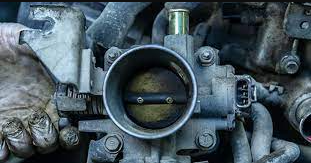service electronic throttle control

About service electronic throttle control
service electronic throttle control is a critical part of any engine and can make or break the performance of your vehicle. If you’re having problems with your throttle, don’t worry—we have an article just for you. In this post, we will discuss about service electronic throttle control and how it can help you solve common engine problems.
What is service electronic throttle control?
This technology is typically found on larger diesel engines and allows the operator to control the power delivered to the engine, improving fuel economy and emissions. By adjusting the throttle, the ECU can also help reduce engine wear and allow for a smoother ride.
Benefits of service electronic throttle control
There are many benefits to using service electronic throttle control (SETC) in your business. SETC can improve fuel economy and emissions while also reducing operator workload. Here are a few of the benefits:
Improved Fuel Economy
When you use SETC, you can improve fuel economy by controlling the engine speed at idle and during acceleration. This can help you reduce emissions and save money on your energy bill.
Reduced Operator Workload
Using SETC can reduce the amount of time that you need to spend operating your engine. This can free up your time for other tasks, such as marketing or sales.
How service electronic throttle control works
Service electronic throttle control (SET) is a technology that allows an aircraft to maintain its cruise altitude and speed while using less fuel. SET works by constantly adjusting the flight controls in response to inputs from the airplane’s On-Board Computer (OBC). This preserves the airplane’s energy by allowing it to fly at its most efficient cruising altitude and speed.
Types of service electronic throttle control
The service electronic throttle control system is a type of fuel injection software that helps drivers maintain consistent engine speed and torque. The system uses sensors to measure vehicle speed, engine load, and other conditions and adjusts the injectors to provide the desired power and fuel economy.
Installation and setup of service electronic throttle control
Many car manufacturers are beginning to offer service electronic throttle control (SETC), which is a system that uses computers to regulate the engine’s throttle response. SETC generally improves fuel economy and emissions by reducing the amount of waste gas released during acceleration and deceleration. Installation of SETC can be a little daunting, but it is not difficult. In this article, we will cover everything you need to know about SETC installation and setup, from buying the necessary parts to installing the system.
First, you will need to purchase a controller unit and an emissions software package. There are many different controller units on the market, so it is important that you choose one that matches your car’s make and model. You can also buy an emissions software package separately. Once you have chosen your components, it is time to install them in your car.
The first step is to remove the old throttle cable from your car’s transmission. Next, disconnect the negative battery cable from the car’s battery. Finally, Remove any screws that secure the dashboard or climate control panel to the car body. Once all of these components are removed, it is time toinstall your new SETC controller unit.
To install your new controller unit, first locate the mounting bracket on the dashboard or climate control panel. The mounting bracket should be marked with either an “H” or an “L” shape; use this information to
Operation and maintenance of service throttle control
Modern engines are fitted with electronic throttle control (ETC) which allows the engine to run at a precisely set speed regardless of driving conditions. A variety of factors can affect the engine’s performance including air temperature, fuel flow and even the driver’s style. It is essential that ETC is regularly serviced and maintained to ensure optimum performance.
The main components of an ETC system are the controller and valves. The controller monitors all these factors and adjusts the valves accordingly. There are a number of different types of controllers available, but all work on the same principle. They contain a microprocessor and sensors which detect various operating conditions and relay this information to the controller.
The most common type of valve is the butterfly valve, which has two sections which open and close independently. This type of valve is used in conjunction with a solenoid actuator, which controls the opening and closing time. In cold weather conditions, it can be tricky to operate butterfly valves properly because they tend to freeze up. To overcome this problem, some controllers use thermal compensation systems which constantly adjust the valve opening times according to changing temperature levels.
In order for ETC to function properly, it is necessary to maintain regular service intervals by replacing parts such as filters, connectors and spark plugs as needed. Replacement parts should be ordered from your local automotive supplier or dealer who will be able to advise you on proper servicing procedures for your specific model vehicle.
Conclusion
A service throttle control system (SETCS) is an important safety feature on many machines. A SETCS monitors the speed and condition of the machine’s cutting blade to ensure that it is operated at a safe speed, preventing possible injuries or accidents. In order to maintain accurate set points, a SETCS will also monitor other machine functions, like coolant temperature and flow, to ensure that they are within operational limits.




